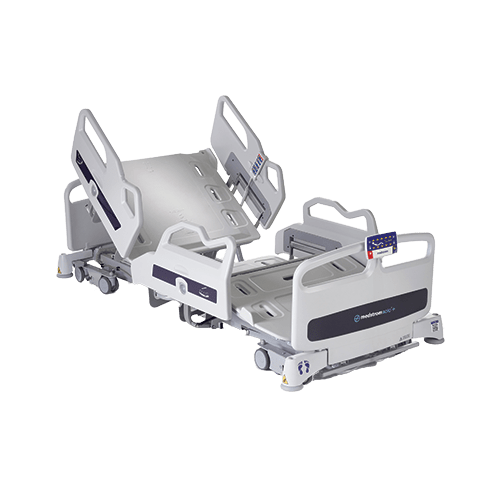Pressure Ulcer Reporting Using the Model Health System
Pressure ulcer reporting across the NHS in England is undergoing a refresh with the introduction of the new Model Health System and Model Hospital reporting tools. Watch the webinar recordings below to hear from two expert speakers involved in a trial site assessment of the online platform. They share their experiences, whilst providing an overview on how pressure ulcer reporting has changed.
1. A brief history of pressure ulcer reporting
There has been a significant interest in collecting pressure ulcer data for several decades; in part to quantify the problem, but equally to understand how different healthcare organisations compare. Within her presentation, Julie Tyrer (Tissue Viability Nurse Consultant at Liverpool Heart and Chest Hospital) explores the different phases of pressure ulcer reporting. Ranging from the initial audits in the early 1970s, through to the eventual launch of the NHS Safety Thermometer in 2010.
Each new initiative and reporting system helped to evolve the process for collecting data, but even with the NHS Safety Thermometer there were still significant drawbacks. Julie outlines some of the key problem areas and limitations, whilst highlighting some of the issues caused by the data, including potential punitive measures for organisations with high reported figures.
Altogether this proved to be ineffective, leading to the discontinuation of the NHS Safety Thermometer in 2020.
2. Understanding the importance of clinical coding
“Clinical Coders are trained to abstract the required and relevant information from a patient’s record and assign the correct diagnostic and procedural information into a coded format.”
With over 30 years’ experience within the industry, Angie offers her advice and guidance to ensure your data is correct. If patient notes are managed correctly and include a verified diagnosis of pressure area damage, Clinical Coding teams are able to attribute one of the following ICD 10 codes:
- L89.0 Category I Decubitus Ulcer and Pressure Area
- L89.1 Category II Decubitus Ulcer
- L89.2 Category III Decubitus Ulcer
- L89.3 Category IV Decubitus Ulcer
- L89.9 Decubitus Ulcer and Pressure Area, Unspecified
Angie recommends that the L89.9 code should rarely be used and that the category should be accurately assessed in order to make sure that your data is as accurate and meaningful as possible. Listen HERE to Julie Tyrer’s response on how they have recorded Unstageable pressure ulcers and Deep Tissue Injury.
Additional coding is also used to help with accurate pressure ulcer reporting, helping to differentiate between those present on admission or those acquired during an in-patient stay.
3. What happens to the flow of coded data?
Once the Trust-coded data is finalised, Angie explains how this flows into the Model Health System for accurate pressure ulcer reporting. The first step involves submission via SUS (Secondary User Services) – which has specific ‘Flex’ and ‘Freeze’ deadlines to assist with final updates or making amends to any clinical data. Angie uses the example of:
- Month of data: March 2022
- ‘Flex’ deadline for March 2022 data: April 2022 (changes can still be made)
- ‘Freeze’ deadline for March 2022 data: May 2022 (changes can no longer be made)
This will then stored in HES (Hospital Episode Statistics) the equivalent of a data warehouse, before then being showcased and interpreted in the Model Health System. Angie’s top tip for anyone looking to use this system is to engage with your clinical coding team as soon as possible.
4. Introducing the Model Health System and Model Hospital
“A data driven improvement tool that enables NHS Health Systems and Trusts to benchmark quality and productivity; data for acute, ambulance and community NHS Trusts”.

Model Hospital is a branch of the Model Health System, focused exclusively on the acute sector. Click HERE Julie’s step-by-step guide on how to familiarise yourself with the layout, terminology and how to compare your hospital’s data with your peers.
Q&A Session
To discover more about the Model Health System, pressure ulcer reporting and what it means for you, watch our dedicated Q&A session. This explores additional questions, including:
- Are Scotland, Wales, Northern Ireland and the Republic of Ireland going to be following the Model Health System?
- What happens if a patient has multiple pressure ulcers?
- Are there ICD10 codes for Unstageable & Deep Tissue Injury?
Alternatively, discover our clinical resource library and find out more about the prevention and treatment of pressure ulcers.







